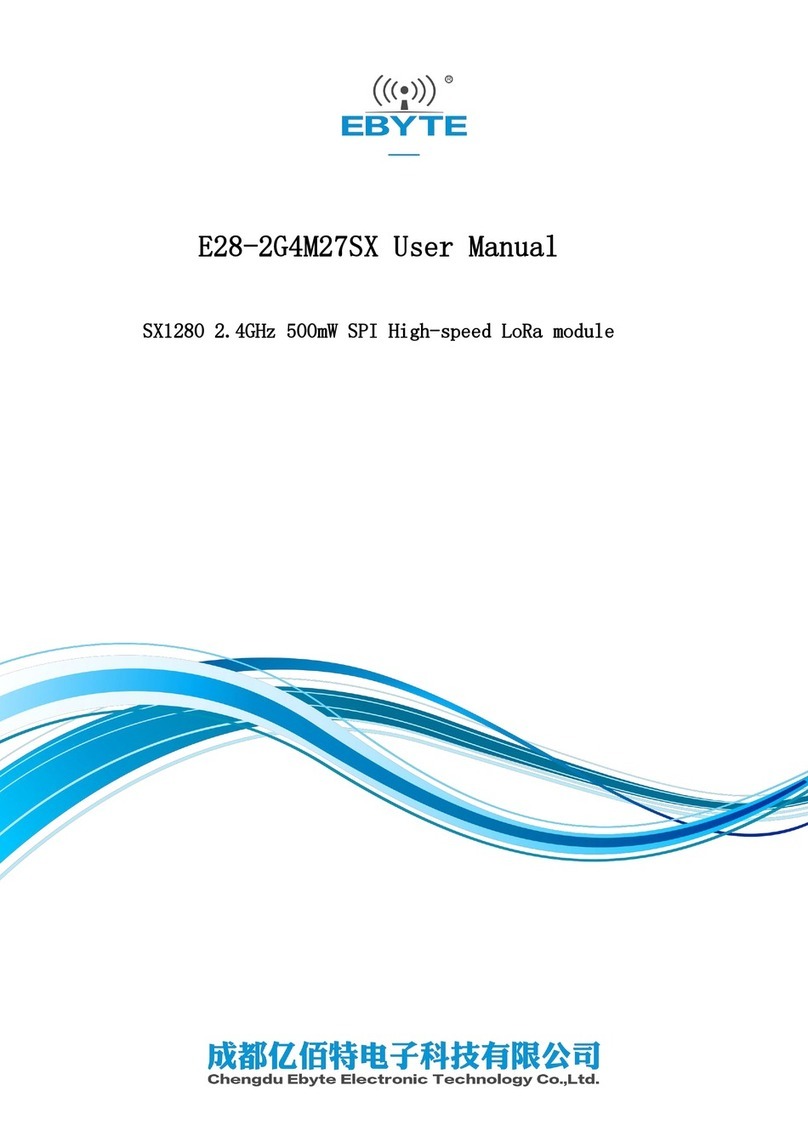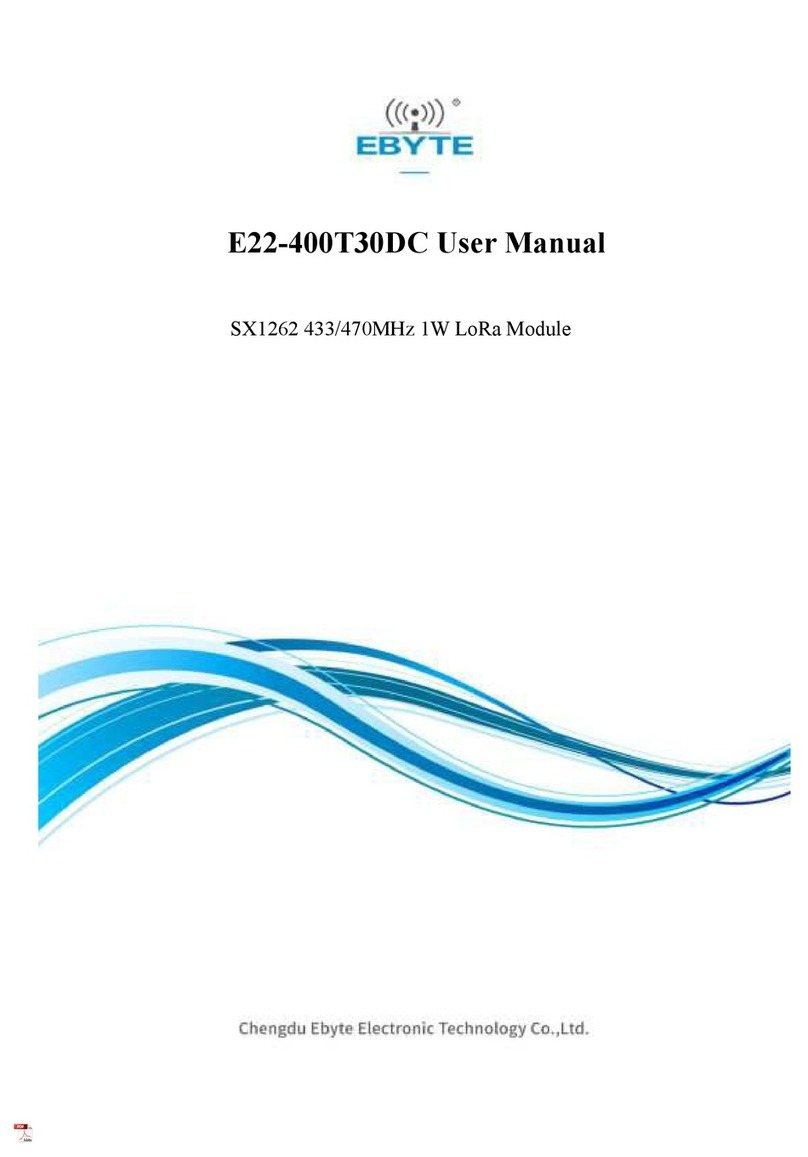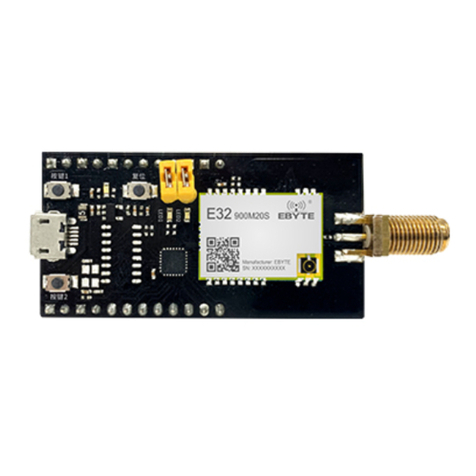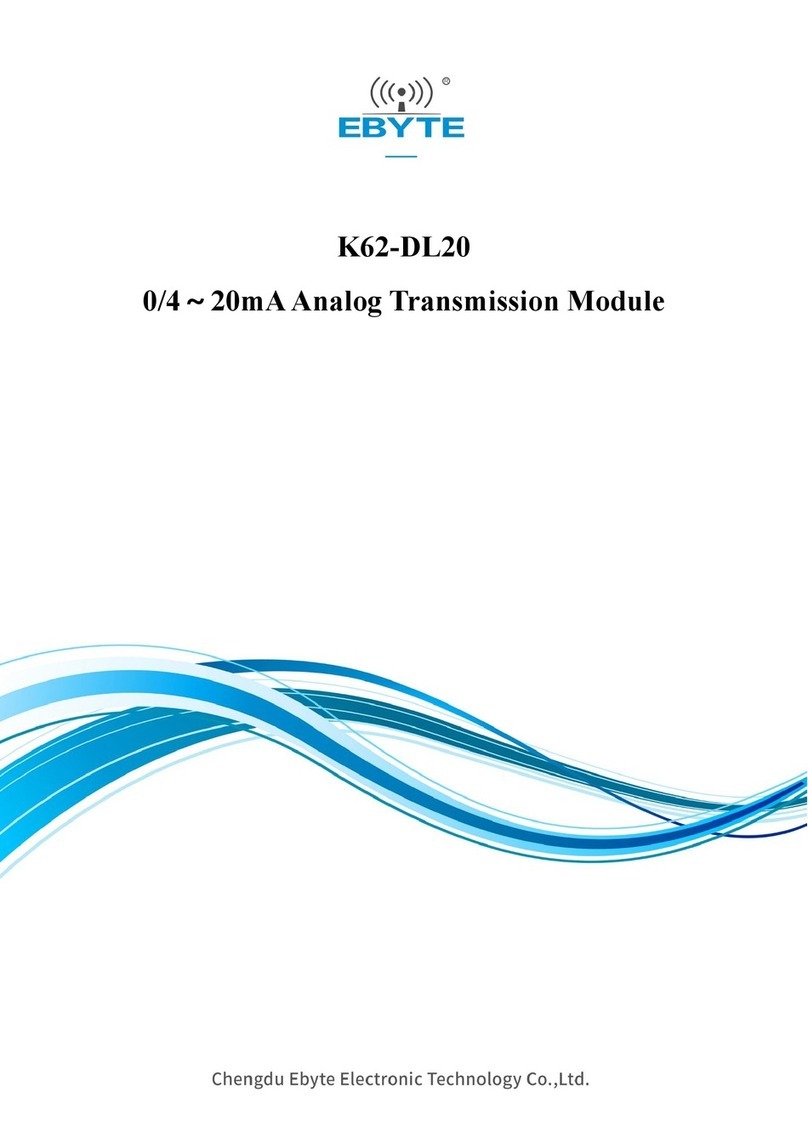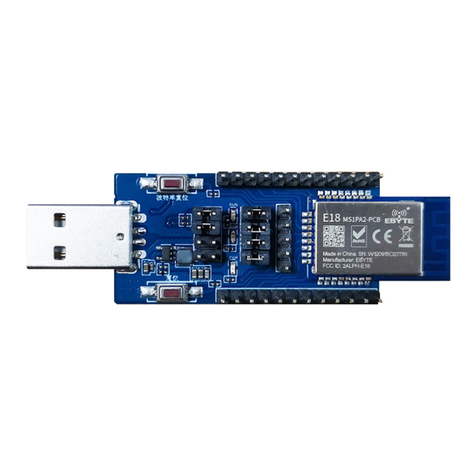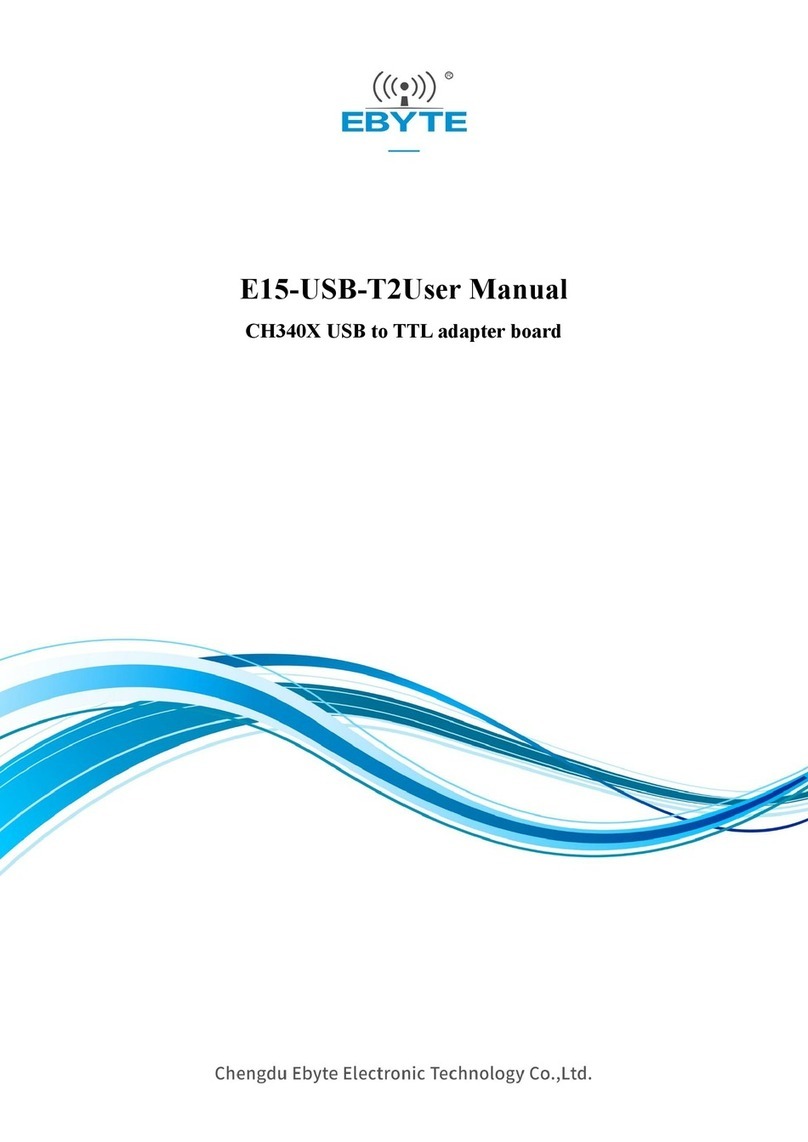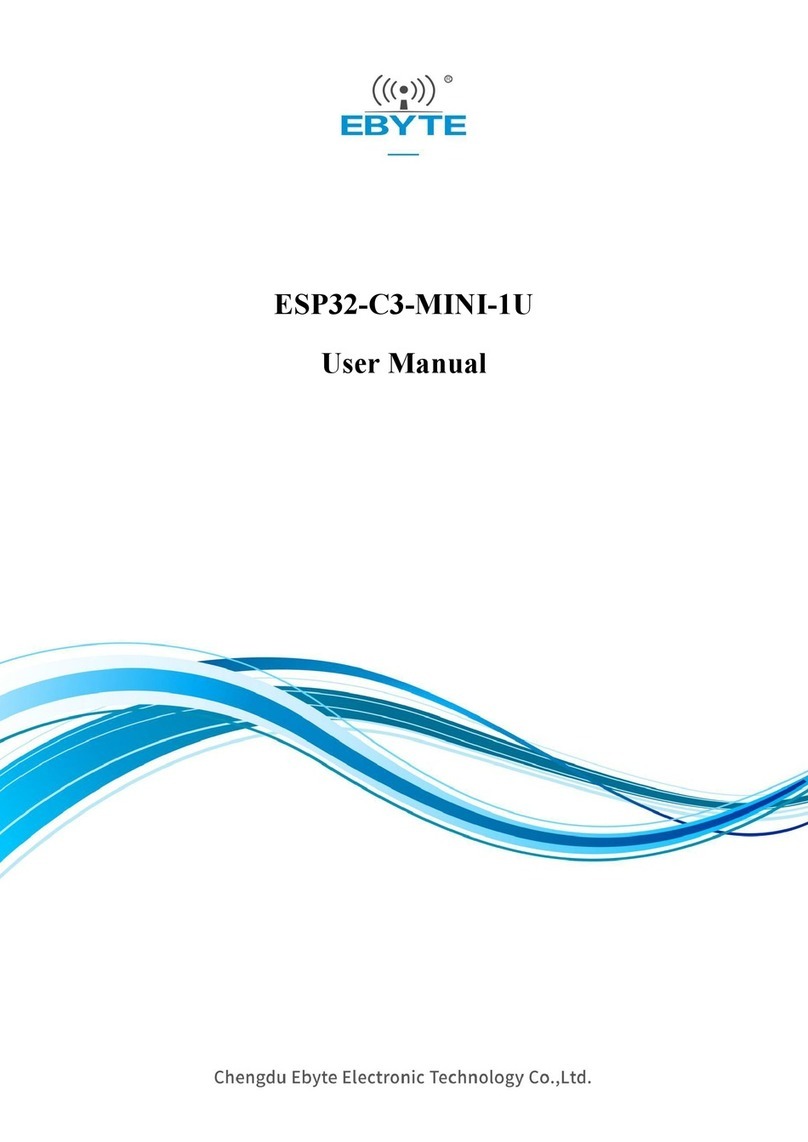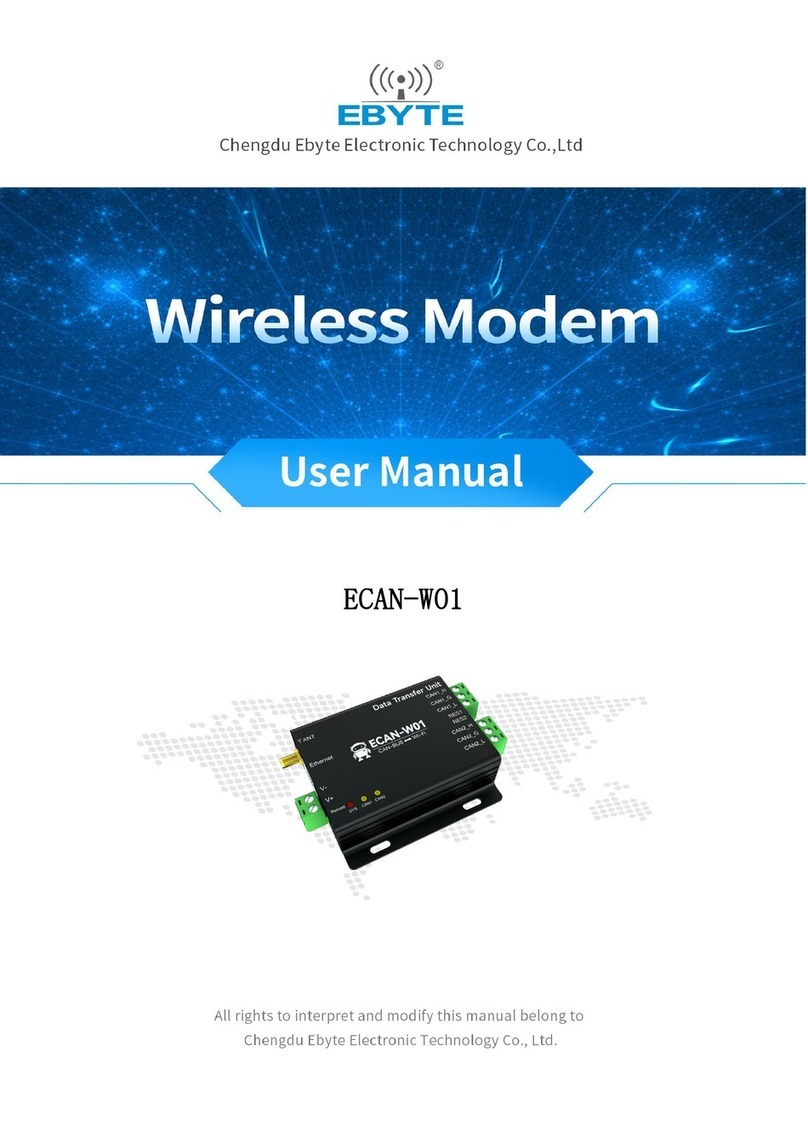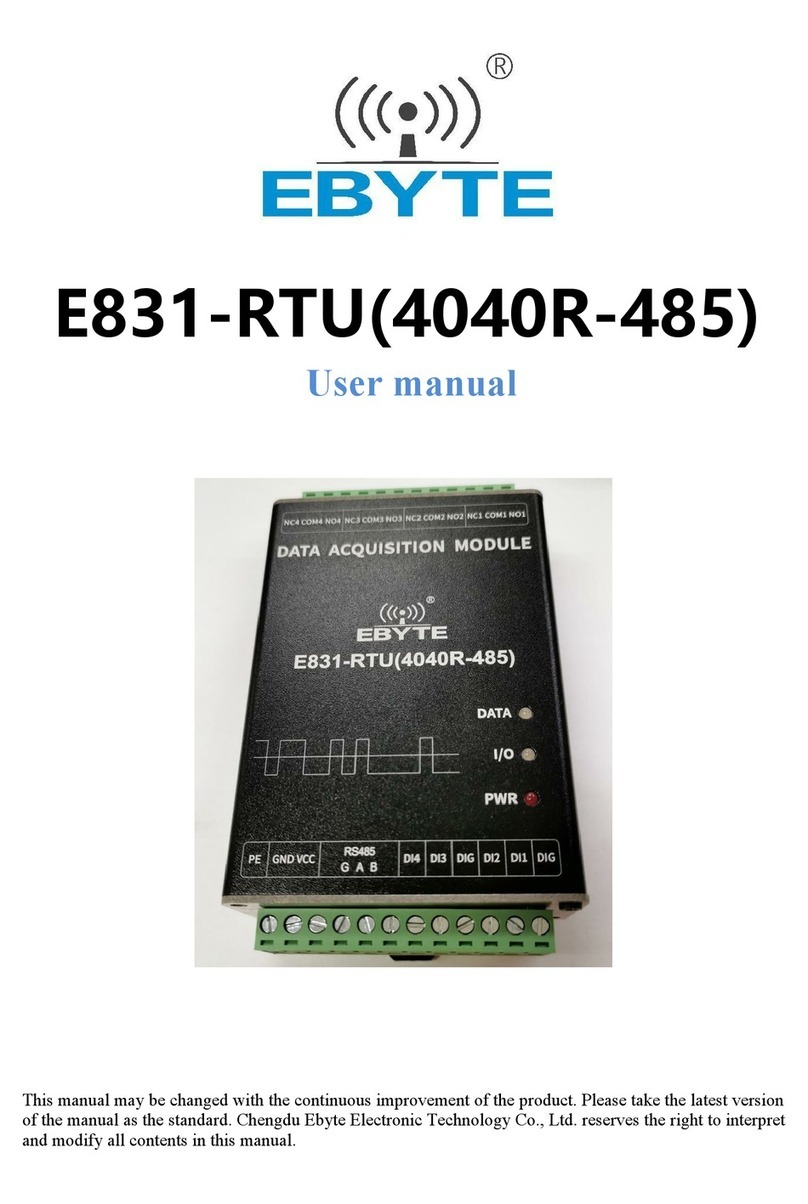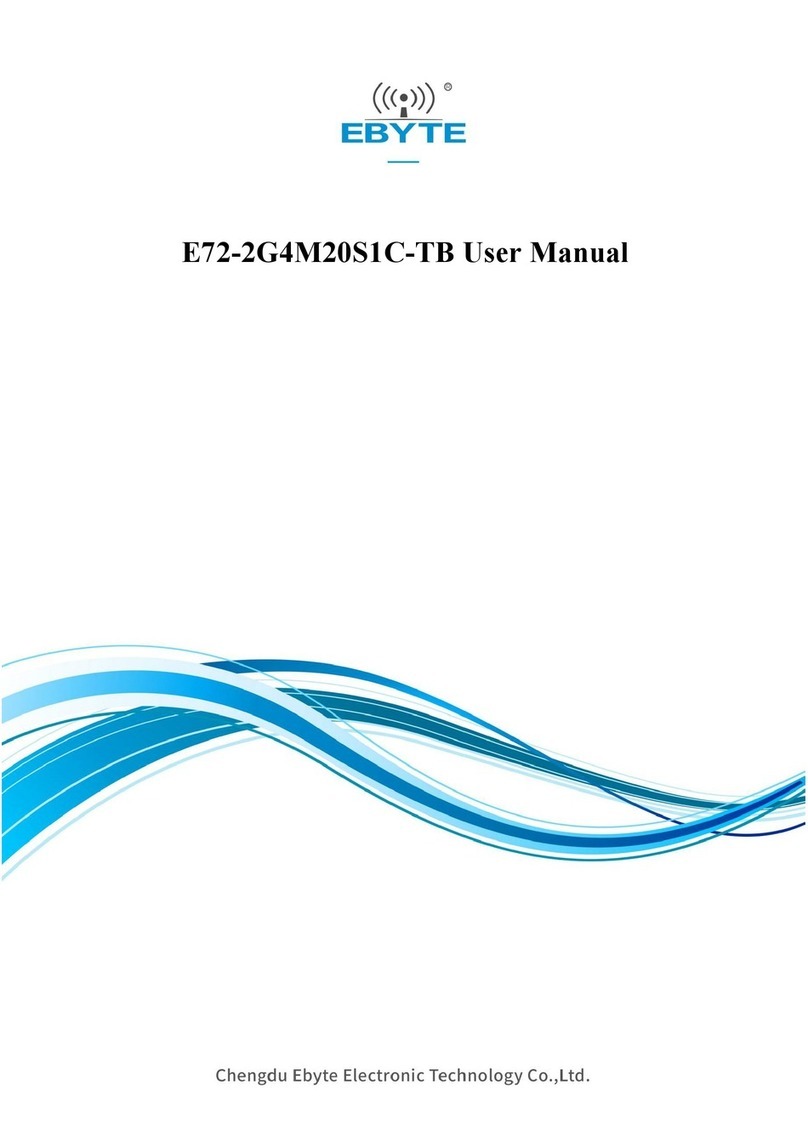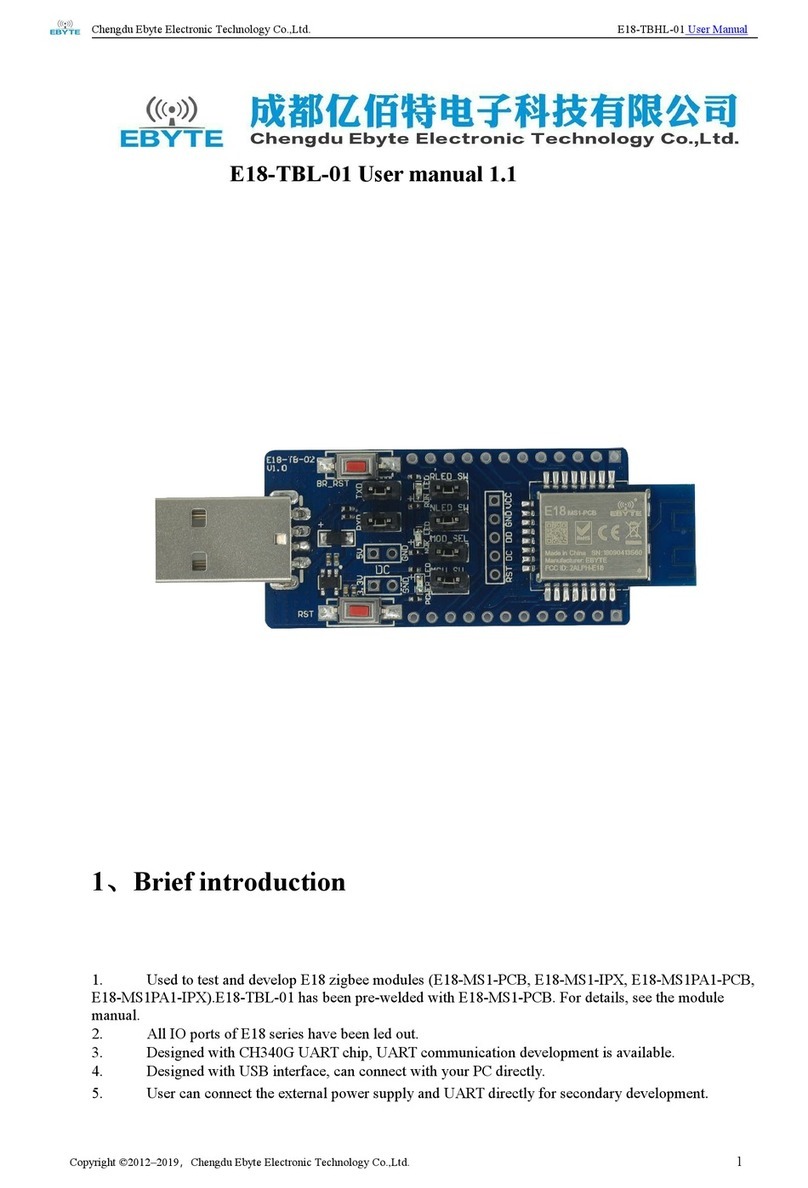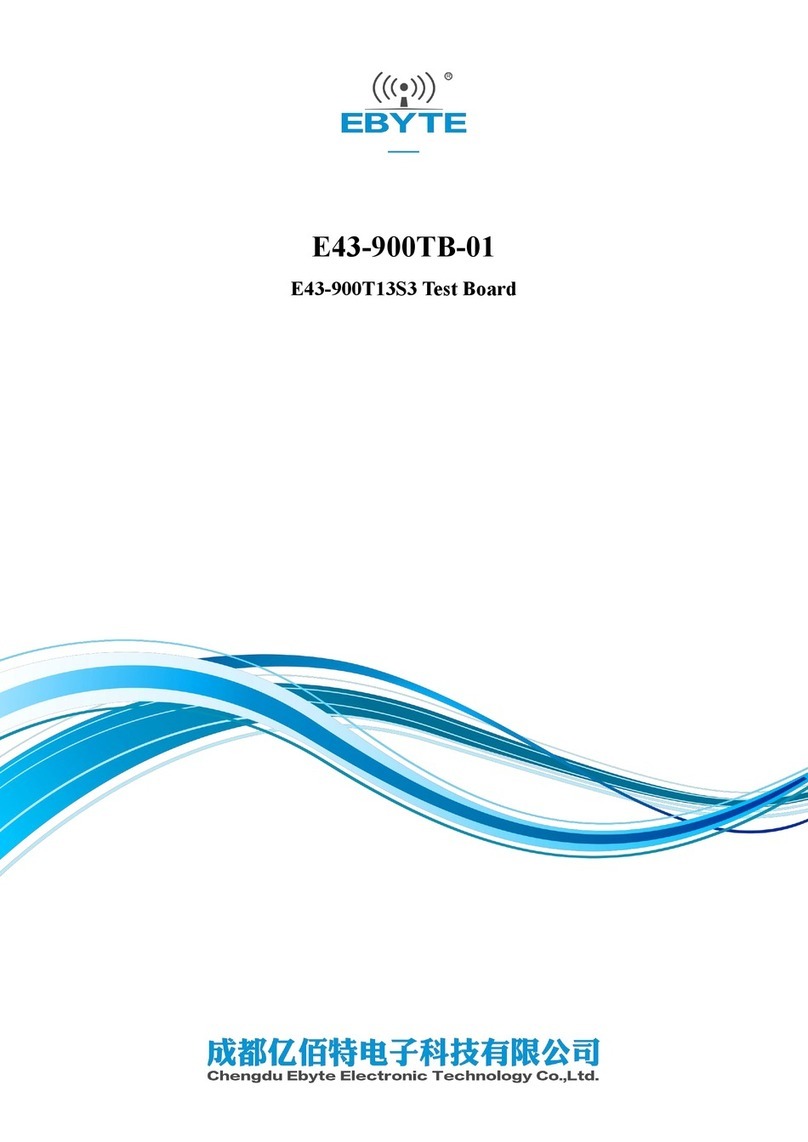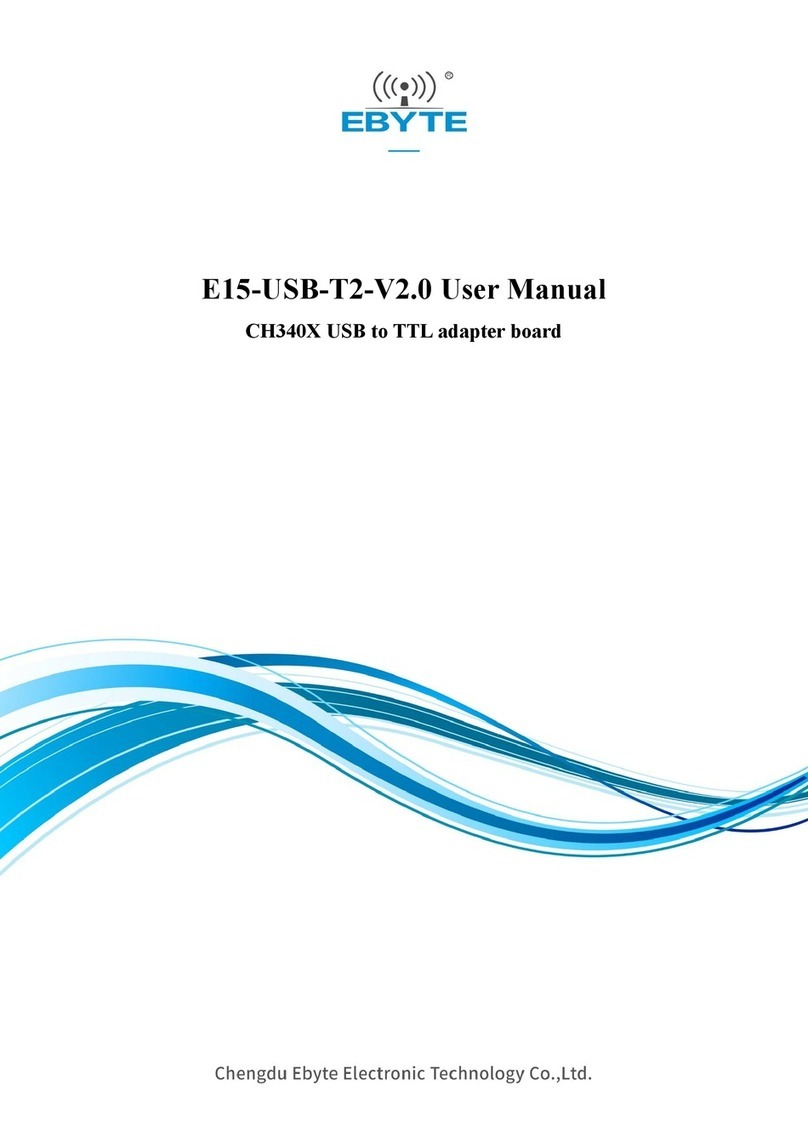
Chengdu Ebyte Electronic Technology Co,;Ltd E70-433NW30S user manual
Copyright ©2012–2019,Chengdu Ebyte Electronic Technology Co,;Ltd 1
CONTENT
1. OVERVIEW .....................................................................................................................................2
1.1 INTRODUCTION ..................................................................................................................................... 2
1.2 FEATURES .................................................................................................................................................................................................2
2.SPECIFICATION AND PARAMETER ....................................................................................................... 3
2.1 LIMIT PARAMETER..................................................................................................................................................................................3
2.2 OPERATING PARAMETER ....................................................................................................................................................................... 3
3 SIZE AND PIN DEFINITION ..................................................................................................................... 4
4 CONNECT TO MCU ................................................................................................................................... 6
5 FIRMWARE TRANSMITTING MODE ..................................................................................................... 7
5.1 TRANSPARENT TRANSMISSION ............................................................................................................................................................ 7
5.2 SHORT ADDRESS TRANSMISSION ........................................................................................................................................................ 7
5.3 LONG ADDRESS TRANSMISSION ..........................................................................................................................................................7
6.DEVICE STATUS ........................................................................................................................................ 8
6.1 AUX DESCRIPTION ................................................................................................................................................................................ 8
6.2 LINK DESCRIPTION ............................................................................................................................................................................... 9
6.3 ACK DESCRIPTION .................................................................................................................................................................................9
7.OPERATING MODE ...................................................................................................................................9
DORMANT NODE ......................................................................................................................................................................................... 10
7.1.COORDINATOR MODE ..........................................................................................................................................................................10
7.2.NORMAL NODE .....................................................................................................................................................................................10
7.3.DORMANT NODE .................................................................................................................................................................................. 10
7.4 CONFIGURATION MODE ...................................................................................................................................................................... 11
7.5 MODE SWITCHING ............................................................................................................................................................................... 11
8.QUICK START .......................................................................................................................................... 11
8.1 COMMUNICATION BETWEEN NORMAL NODE AND COORDINATOR ............................................................................................ 11
9. AT COMMAND ........................................................................................................................................ 14
10. HARDWARE DESIGN ........................................................................................................................... 20
11 FAQ ..........................................................................................................................................................20
11.1 COMMUNICATION RANGE IS TOO SHORT ...................................................................................................................................... 20
11.2 MODULE IS EASY TO DAMAGE ........................................................................................................................................................21
11.3 BER(BIT ERROR RATE)IS HIGH .................................................................................................................................................... 21
12.PRODUCTION GUIDANCE ................................................................................................................... 21
12.1. REFLOW SOLDERING TEMPERATURE ...........................................................................................................................................21
12.2 REFLOW SOLDERING CURVE .......................................................................................................................................................... 22
13. E70 SERIES ............................................................................................................................................ 22
14. ANTENNA RECOMMENDATION ........................................................................................................ 22
15. PACKAGE FOR BATCH ORDER ..........................................................................................................23
REVISION HISTORY .................................................................................................................................. 24
ABOUT US ................................................................................................................................................... 24
